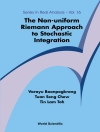Statistical shape analysis is a geometrical analysis from a set of shapes in which statistics are measured to describe geometrical properties from similar shapes or different groups, for instance, the difference between male and female Gorilla skull shapes, normal and pathological bone shapes, etc. Some of the important aspects of shape analysis are to obtain a measure of distance between shapes, to estimate average shapes from a (possibly random) sample and to estimate shape variability in a sample[1]. One of the main methods used is principal component analysis. Specific applications of shape analysis may be found in archaeology, architecture, biology, geography, geology, agriculture, genetics, medical imaging, security applications such as face recognition, entertainment industry (movies, games), computer-aided design and manufacturing. This is a proposal for a new Brief on statistical shape analysis and the various new parametric and non-parametric methods utilized to facilitate shape analysis.
İçerik tablosu
A brief overview on statistical shape analysis.- Theoretical aspects.- NPC test power behaviour with GPA superimposition and correlation.- Finite-sample consistency of combination-based tests in shape analysis.- Applications to real case studies.- Bibliography.- References.
Yazar hakkında
Luigi Salmaso, Ph.D. Professor of Statistics Department of Management and Engineering University of Padova Padova, Italy Chiara Brombin, Ph.D. CUSSB, Vita-Salute University of San Raffaele Milan, Italy












